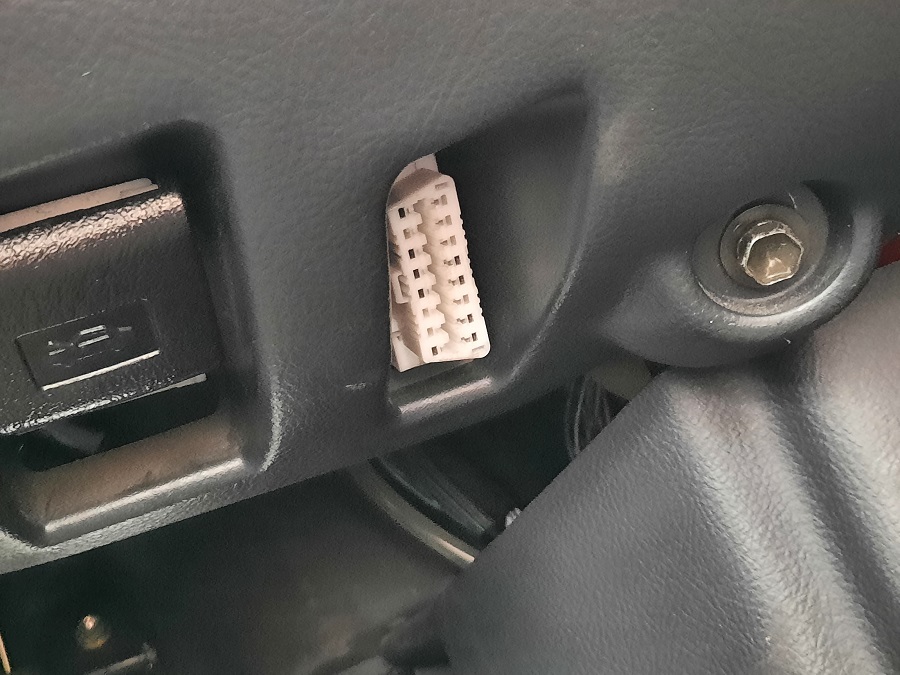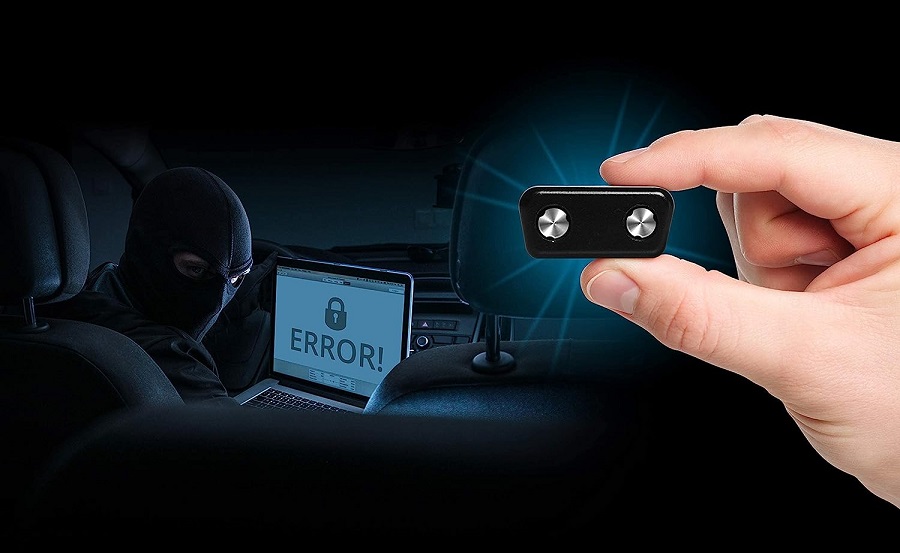With vehicle electronics getting more sophisticated by the day, so are the thieves, so we’ve compiled this OBD2 car security guide to help stop your car being stolen.
While your vehicle’s on-board diagnostics system is massively useful in many ways, it does have one big downside. Unfortunately, the nature of how the OBD2 system is designed – the many sophisticated optional additions that manufacturers have built in to the OBD2, and the ever increasing sophistication of car thieves’ methods – have also made many cars easier to steal than they have been for many years. Thankfully though, there are ways to combat this, and in this feature we show you how.

How does the OBD2 system benefit car thieves?
While of course nothing on the OBD2 system was ever intended to be helpful to car thieves, there’s a number of unintended consequences of how OBD2 works that unfortunately causes weak points in car security.
The first issue is OBD2 in its very nature is a universal system. By law it has to have a universal access port. It also has to be in a place that’s easy to reach from the driver’s seat, and have publicly available compatible software. These issues alone though don’t instantly allow car theft, but what it does allow is the potential for thieves – with the right software and know-how – to potentially access all systems on a vehicle. On many modern cars, that means access to things that allows the vehicle to be taken without the owner’s consent.
How do they do it?
Physical connection to the OBD2 port is needed, so the thieves still need to get into the vehicle. They do so by either the ‘traditional’ ways of breaking a window or picking the lock, or thanks to modern keyless entry, thieves can use various electronic gadgets to transmit the ‘unlock’ signal to the car even when they don’t have the keys themselves. Beyond this point, it’s all about the OBD2 system.
Not all cars can be stolen via the OBD2 system, and some are far easier than others, but unfortunately some of the more sophisticated cars with their in-depth electronics actually make it easier than many more basic vehicles.
The most common way is using the OBD2 system to code a blank key to the car. This is something most modern cars are capable of, and indeed is a hugely useful thing for a dealer to be able to do for you if you have lost or damaged your original key. But, it also means that if a thief has the equipment and knowledge to do it, they can literally sit inside your car, program a new key in a matter of minutes or even seconds, and drive away in it. With many modern cars having keyless start, this is even easier, as the ignition key barrel doesn’t need damaging to remove the steering lock and to turn the system on.
On some vehicles even key programming isn’t needed, and as hard as it may be to believe, some have an ‘emergency start’ function built in to the OBD2 system. While meant for dealer or manufacturer use only, this function has allowed thieves to develop systems which quickly plug into the OBD2 port and allow them to drive away in a matter of seconds.
How to help prevent this
While car security has always been an issue and many traditional deterrents are still effective now, there are some more OBD2-specific security solutions in existence now, as well as some older things that potentially are more effective now than they used to be…

Physical deterrents
While certain things related to car security never change, such as leaving your car in well-lit areas, literal barriers to prevent your car being moved, or having a removable steering wheel, there are now OBD2-specific physical theft deterrents that can be hugely effective too.
OBD2 Relocation & Protection
The simplest thing is to relocate the OBD port to somewhere far less obvious. By law, manufacturers have to place the OBD2 port in an easily accessible location from the driver’s seat, and all would-be thieves will know exactly where that is on the car in question. But what if they find out it’s not there? Well as most of these types of theft rely on the fact it’s a quick getaway, a missing OBD2 port that’s been hidden elsewhere will often make the thieves abandon their attempt rather than spend significant time trying to find the relocated port. Sometimes this tactic can even include a fake OBD2 port in the original position, tricking the would-be thief in to thinking there’s an issue with his equipment rather than thinking to look for the hidden ‘real’ port.
Another popular physical deterrence is a lockable casing around the OBD2 port, meaning it cannot be accessed without either the key or by destroying the protective casing to get in. Again much like the relocated and dummy OBD2 ports, this relies on the fact that most thefts are very time sensitive so they are far less likely to spend significant time trying to access your own port rather than abandoning the attempted theft and go looking for an easier target.
Old School Methods
Last, but certainly no means least, one of the oldest physical deterrents there is- A steering wheel lock or clamp. While these used to be very common (and often not very effective as most car thieves knew this was their main barrier so would come equipped with the knowledge and tools to remove these in seconds), these days they are far less common. As such, the modern day thief might lack the relevant tools and knowledge.
Electrical deterrents
Just like with physical deterrents, there’s certain electronic aids to help prevent vehicle theft that have existed for decades, but once again there are some that are now OBD2 theft specific.
While it won’t stop them taking the vehicle, and is certainly not undefeatable regardless, a good aftermarket vehicle tracker can both put off potential thieves and massively increase the likelihood of getting your vehicle back even if it is stolen. As an aftermarket tracker is completely unconnected to the car’s main electrical systems, it’s not something that can be found and defeated by plugging something in to the OBD2 port. Instead, you would need to physically find it and remove it; not something most criminals will want to do.
Immobilizers
On a similar note, while they’ve massively fallen out of favor compared to factory fitted systems, aftermarket alarm and immobilizers can be a massive help, simply due to the fact they aren’t connected to the cars OBD2 system in any way. Unfortunately in many cases, despite being highly sophisticated, OEM alarms and immobilizers are often connected to the OBD2 system, allowing them to be deactivated with ease if the thief has the right equipment. A good aftermarket one, meanwhile, would need specialist knowledge to bypass; something that used to be part of the skillset of professional car thieves in the past, but far less so in this era of OBD2-based thefts.
While strictly a type of immobilizer, one electrical deterrent that is very popular on cars with an OBD2 port theft issue is the Ghost system. While still being totally unable to be accessed or even detected via the OBD2 system, this latest generation immobilizer doesn’t involve cutting wires, key fobs, or anything you’d associate with a traditional immobilizer. In fact, it’s totally undetectable, with not even any radio waves emitted. Despite not being detectable by the OBD2, it does function via the car’s CAN system, and allows you to disarm the system via a series of user-definable button presses of the vehicle’s various standard interior buttons.
Conclusion
While there is no single fool proof solution to OBD2 car theft, the best advice is to use a combination of visible physical deterrents to hopefully stop any attempt before it even begins, simple invisible things such as relocated and fake OBD2 port, and ideally aftermarket immobilizer and tracker systems to hopefully prevent even the most determined thief.
While of course the potential for a vehicle being taken is always there, the harder you make yours to be taken, the higher the likelihood they will leave it and search for an easier target…
Words by Stav.







